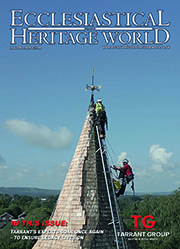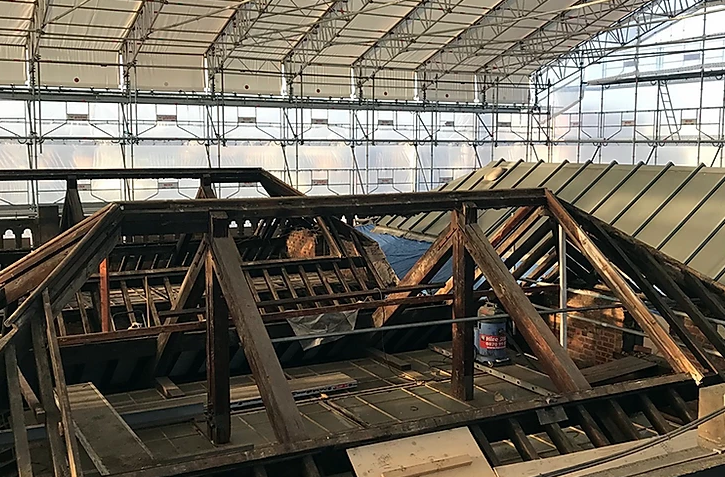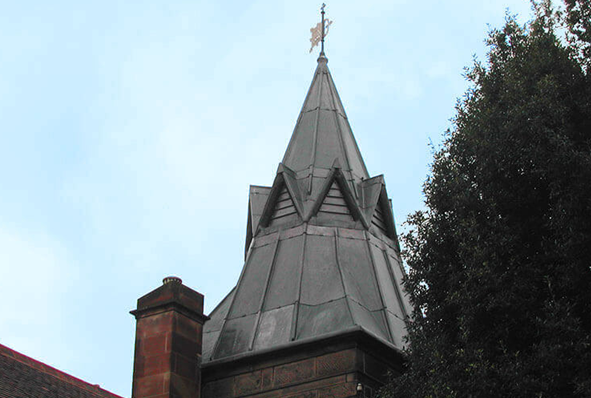Heritage Roofing
Heritage roofing - maintaining our iconic buildings
The UK is home to some of the most iconic buildings in the world, from stunning churches and cathedrals to historic stately homes. Each and every one of these remarkable feats of architecture requires regular maintenance to ensure they remain in the very best condition, allowing them to be enjoyed for generations.
Lightning Protection
When lightning strikes are you protected against this act of God?
The issue of lightning protection in churches is one that has exercised this publication for many years. In this four-part series of spotlights on the issue we will be revisiting various aspects of the subject, beginning with an overview of current thinking.
Traditional Lime
Lime: it’s better for buildings – and for the environment
It is now fairly well known that cement is not good for old buildings and that lime mortar should be used. But why? What are the advantages and what are the disadvantages? In order to begin to answer those questions it is necessary to understand the nature of traditional building, the process by which buildings used to be built, and how it differs from modern construction, the process by which we build today.
Audio Visual
Audio visual equipment in church buildings
This guidance is issued by the Church Buildings Council under section 55(1)(d) of the Dioceses, Mission and Pastoral Measure 2007. As it is statutory guidance, it must be considered with great care. The standards of good practice set out in the guidance should not be departed from unless the departure is justified by reasons that are spelled out clearly, logically and convincingly.
Read More...
CRE Events
Churches are coming under starter’s orders for CRE 25
Churches across the nation are beginning to make preparations for their visit to Christian Resources Exhibition’s CRE 25.
Insurance
You need to ensure that reasonable precautions are in place at your church to keep it safe for those who use it. To do this, you need to think about what might cause harm to people.
You will then need to decide if the precautions already in place are adequate. If they are not, you may need to identify further action to prevent any danger. When done formally, this is known as a risk assessment.
LPOW Grants
£23 million government package to support restoration of thousands of listed places of worship
Heritage Minister Sir Chris Bryant has announced that the Listed Places of Worship Grant Scheme will be extended into the next financial year, providing £23 million so that thousands of historical buildings, including churches, synagogues, mosques and temples, can carry out restoration work.
Lead Roofing
Lead is one of the oldest materials in the roofing industry and is still commonly used throughout the world today.
Lead roofing is a traditional roofing method which has been used in the industry for hundreds of years, and is therefore proven to be extremely reliable. Lead roofing, and sand-cast lead, in particular is ideal for old buildings such as churches or historical renovations, whereas milled lead roofing is a mass-produced alternative, used for precision and accuracy in homes and commercial buildings alike.
Home
Abingdon Old County Hall
Abingdon Old County Hall restoration gets Heritage Lottery Fund go-ahead
Plans to give Abingdon’s historic County Hall Museum a complete makeover will go ahead, thanks to a final grant of just over £1.7 million announced today by the Heritage Lottery Fund (HLF).
To date, the project has been awarded £210,000 in development funding, and a £50,000 project planning grant, making the total investment £1.97million.
The imposing town centre Grade I listed building was constructed between 1678 and 1682 and is steeped in local history and traditions. Its dual role as market hall and Sessions House dates from when Abingdon was included in the boundaries of the old county of Berkshire and played host to the local courts, the assizes. A popular local museum created in the 1920s it boasts a rich collection of local historical artefacts plus geological and archaeological finds, textiles, paintings and objects relating to the former MG Motors plant in the town.
Specific improvements planned include a platform lift with stops to the basement, street-level and Arcade. Details of the design of the lift have been agreed with English Heritage and gained planning permission in autumn 2009.
The project provides improved education and community facilities and space for temporary exhibitions. A programme of community consultation, education and audience development will now get underway. Abingdon Town Council, which has been awarded the grant, hopes to increase the visitor figures, of 20,000 per year, to 30,000.
Stuart McLeod, Head of Heritage Lottery Fund South East England said:
“This project will breathe new life into a much-loved historic building and help to underpin its future as a visitor attraction, venue and educational resource.”
The restoration and improvement work that will now get underway includes extension and modernisation of the cellar for the new learning and community space, shop, coffee bar and toilets. The Sessions Hall will be equipped with new lighting, heating, air-conditioning and soundproofing.
Museum Curator Dr Lauren Gilmour said:
“We are delighted that we will be opening up the second floor to the public with
displays of the MG collection and Oxfordshire County Council’s craft collection, enlarged and improved. In addition a new display area will be designed for the large important reserve collections.”
Councillor Julie Mayhew-Archer, Chair of the County Hall Museum Management Committee said:
“This is a fantastic opportunity to improve a building of national significance and the valuable Museum services it provides.”




















